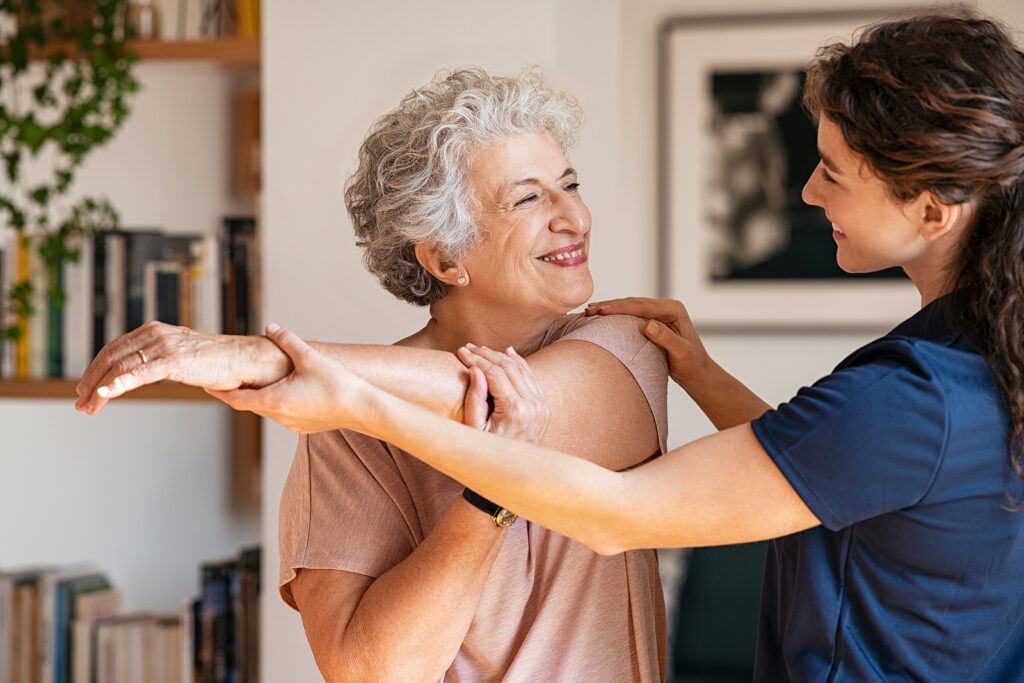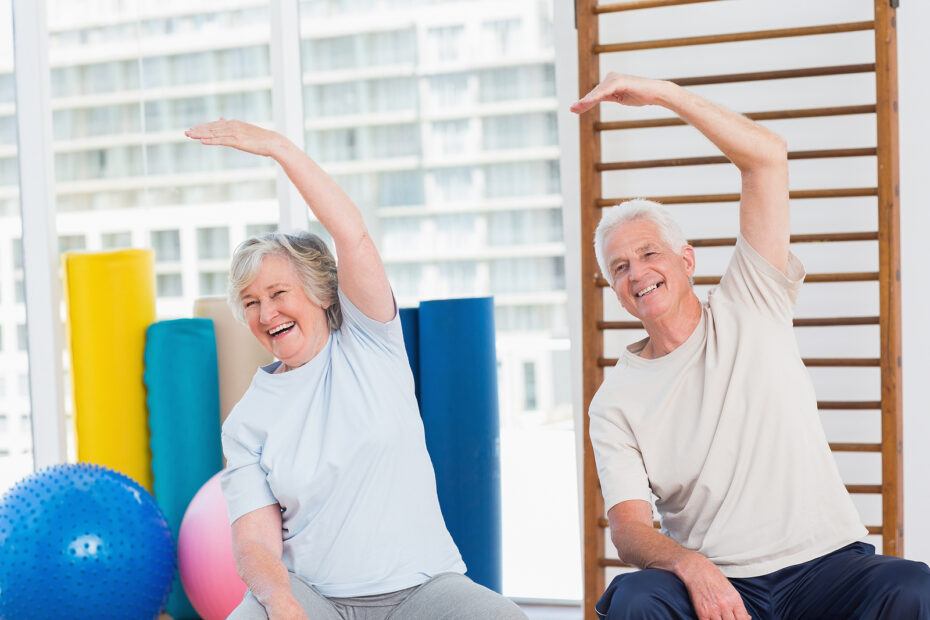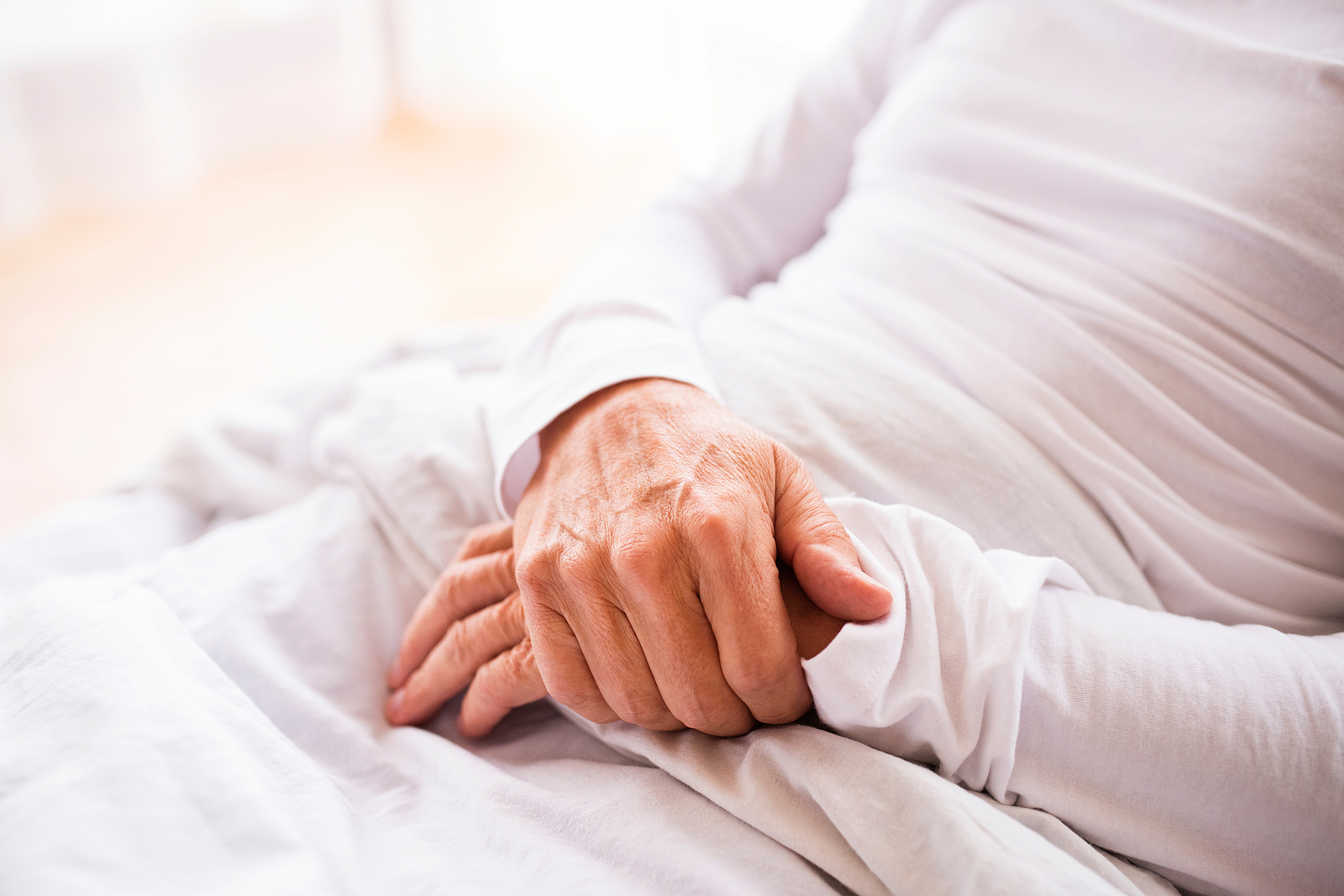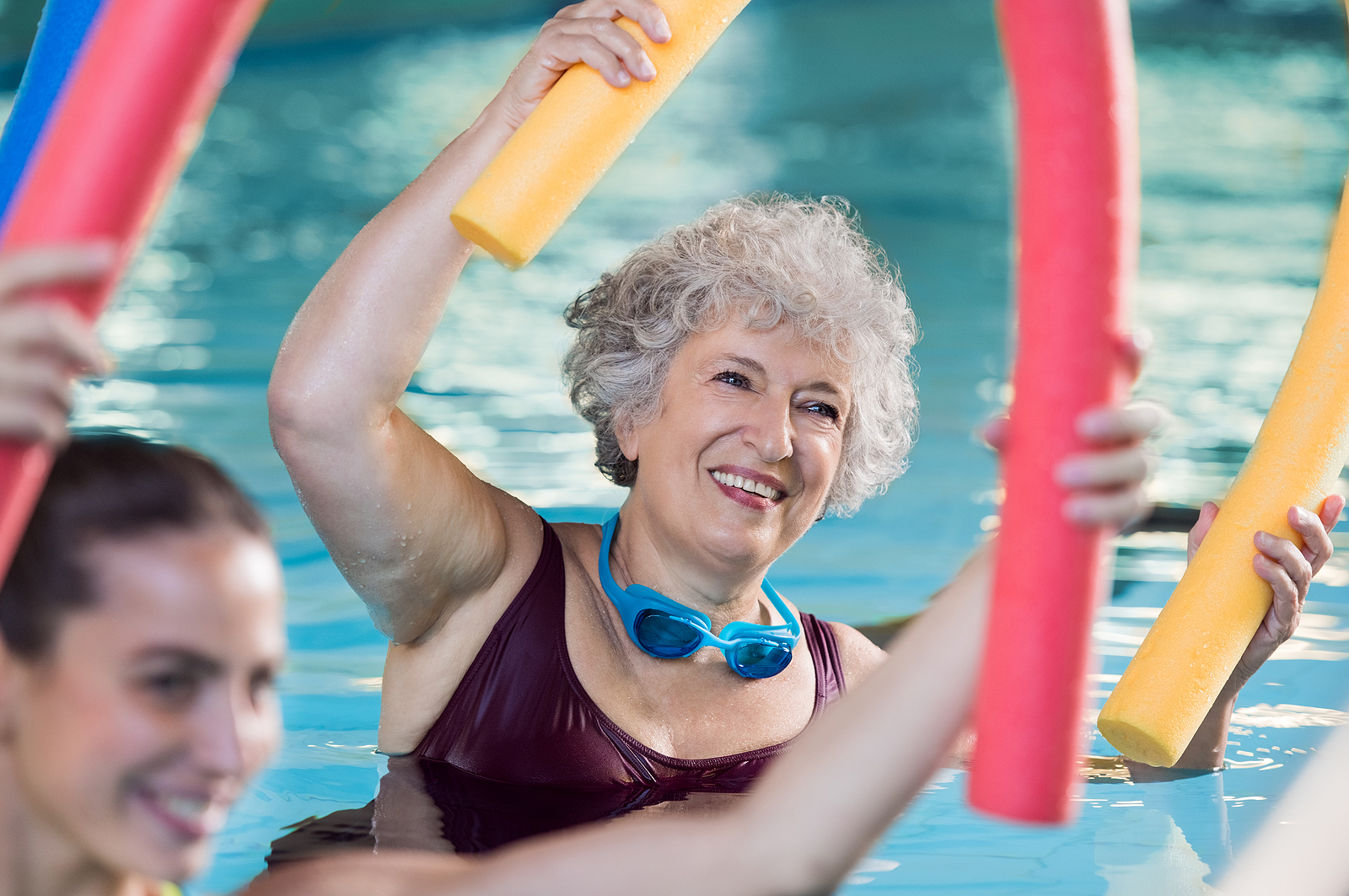Seated stretching exercises are a safe and effective way for seniors to maintain flexibility and reduce muscle stiffness.
They can also be helpful in improving circulation, reducing pain, and improving posture.
These stretches can also be done at home with minimal equipment, making them accessible for all fitness levels.
In other words, these simple exercises have a lot to offer -especially for seniors with more mobility or balance issues.
As a physical therapist, I’m of the opinion that any movement is better than no movement, but if you’re looking to get the most out of your effort, it’s a smart idea to have a game plan.
In this article, we’ll explore some of the best stretches seniors can do to get the whole body moving, all while sitting comfortably in their favorite chair.
Benefits of Seated Stretching
Seated stretches are particularly beneficial for seniors with mobility issues or joint pain because they can be done without having to stand or change position.
And the benefits of stretching in general are numerous, but here’s a quick rundown on the major perks:
- Enhanced Range of Motion: Seated stretching can gradually improve the range of motion in joints, especially in areas prone to stiffness, like the hips, knees, and shoulders. This increased flexibility allows seniors to move with greater ease in everyday activities.
- Reduced Joint and Muscle Stiffness: As we age, muscles and joints can become tighter, leading to discomfort and limited mobility. Regular stretching can help reduce stiffness and encourage muscle relaxation, easing tension in problem areas like the lower back, neck, and legs.
- Improved Circulation: Gentle stretches stimulate blood flow, which supports heart health and helps deliver oxygen and nutrients to muscles. Enhanced circulation can also reduce inflammation, particularly beneficial for those with arthritis.
- Improved Balance and Posture: Stretching can help lengthen stabilizing muscles around the core, hips, and back, promoting better posture and balance. This can help seniors stay upright and reduce the risk of falls, a common concern as we age.
- Mental Relaxation and Stress Relief: Stretching can be calming and helps release endorphins, which are natural mood boosters. Taking a few moments to stretch encourages mindfulness and relieves stress, which can improve overall well-being.
Top Seated Stretching Exercises for Seniors
1. Seated Torso Twist
This is a great exercise because it stretches a lot of muscles that are prone to tightness between the thoracic and lumbar spine.
It also includes rotation, a functional movement a lot of seniors start doing less of over time.
And if you turn your head while stretching, you can get a little vestibular stimulation, which can be helpful for improving balance and reducing symptoms of dizziness with positional changes.
- Sit upright with feet flat on the floor.
- Place your right hand on the back of the chair and your left hand on your right knee.
- Slowly twist to the right, feeling a gentle stretch in the back and core.
- Hold for 15-30 seconds, then switch sides.
This is a great stretch, but seniors with significant back pain or who have had any spinal procedures may want to check with their physician or physical therapist before trying.
Click here to see a YouTube video demonstration.
2. Seated Hamstring Stretch
Adults of all ages struggle with hamstring tightness, but seniors who find themselves sitting for the majority of the day are at especially high risk.
And keeping your hamstrings flexible is important because it can help reduce knee/hip/back pain, as well as help maintain proper walking pattern.
There are a ton of ways to stretch the hamstrings, and fortunately, you can even stretch ’em out effectively while sitting.
- Extend one leg straight out in front, with your heel on the floor and toes pointing upward.
- Keep your back straight and hinge forward at the hips.
- Feel the stretch along the back of your extended leg.
- Hold for 15-20 seconds, then switch legs.
This is an easy and effective way to stretch your hamstrings, but you can also modify by stretching your leg out on an ottoman in front of you.
Helpful tip: the more you hinge forward, the more stretch you’ll feel in your hamstrings.
Click here to see a YouTube video demonstration.

3. Upper Trap Stretch
The upper trap is a big muscle that goes from your shoulder blade to your neck on each side and a lot of us hold tension up here.
Stretching this muscle can help relieve neck and shoulder pain, as well as improve neck range of motion (something a lot of seniors struggle with).
- Sit upright with both feet flat on the ground.
- Tilt your head to one side, bringing your ear closer to the shoulder.
- Hold for 15-20 seconds, then switch sides.
You want to be gentle with this exercise, so don’t try to force your neck to go farther than it wants to comfortably go.
Helpful tip: if you don’t feel much stretch, try placing your hand behind your back or holding onto the chair seat to help keep your shoulder blade locked down.
Click here to see a YouTube video demonstration.
4. Seated Side Bend
Here’s another great back stretch which can be helpful for seniors dealing with lumbar aching or generalized stiffness.
This exercise targets the quadratus lumborum, a large muscle that runs on the side or our low back, which is prone to becoming tight and causing problems.
- Place your right hand on the seat of the chair for stability.
- Lift your left arm overhead and gently lean to the right.
- Hold for 15-30 seconds and switch sides, feeling a stretch along your torso and side.
Click here to see a YouTube video demonstration.
5. Seated Knee-to-Chest Stretch
This is the seated version of the classic lying down stretch and it can be helpful for reducing pain and tightness in the back of the hips and low back.
Just be careful, because some seniors may feel a little pinching in the front of their hip while performing this one – if this is the case, try repositioning your knee out to the side a little.
- Sit on the edge of the chair with your feet flat on the floor.
- Gently pull one knee up toward your chest, holding with both hands.
- Hold for 15-20 seconds, then switch to the other leg.
FYI, if you’ve had a hip replacement, you’ll probably want to skip this stretch.
Click here to see a YouTube video demonstration.
6. Seated Chest Stretch
Chest (pec) tightness is an issue folks of all ages deal with, but it’s especially common in seniors due to less movement, more time spent sitting, and faulty posture.
And chest tightness can lead/cause a lot of musculoskeletal problems, including neck/shoulder/back pain.
So, including a good chest stretch in your routine is certainly a good idea.
There are several different ways to stretch the muscles in your chest, but this seated variation is simple and low impact, making it a nice option for seniors with mobility issues.
- Sit on the edge of your chair with your feet flat on the floor.
- Bring both arms up to shoulder height, keeping your elbows bent and hands up toward the ceiling.
- Squeeze your shoulder blades together as you pull you arms back, feeling a stretch in your chest.
- Hold for 15-20 seconds and then relax. Repeat 3-4 times.
Helpful tip: if you have achy shoulders, you can adjust the height/angle of your arms to put less stress through your shoulders.
Click here to see a YouTube video demonstration.
7. Posterior Shoulder Stretch
This is another great stretch for seniors dealing with tight or achy shoulders.
This stretch targets the posterior delt, the big muscle on the back side of the shoulders, which is a common culprit when it comes to shoulder and rotator cuff pain.
- Sit upright in your chair, feet planted flat on the floor.
- Bring your right arm across your chest, keeping your elbow straight.
- Grab below your right elbow with your left hand and gently pull across your chest (you should feel a stretch in the back of your right shoulder).
- Hold for 15-20 seconds and then switch to the other side.
- Repeat 3-4 times for each side.
You may have to adjust the angle of your shoulder to ensure you feel the stretch without pinching the front of your shoulder.
As always, if you have any pain during this stretch, readjust or discontinue.
Helpful tip: focus on keeping your shoulder blades down and you’ll feel a better stretch.
Click here to see a YouTube video demonstration (this video shows the standing version, but it’s done the same from a seated position).
Safety Tips for Seated Stretching
Warm Up First
Even with gentle stretches, it’s important to warm up muscles.
Begin with light seated movements like marching in place or gentle arm circles to loosen muscles and avoid strain.
Use Proper Alignment
Sit with your back straight and feet flat on the floor to reduce strain on the lower back and promote safe stretching.
Try to maintain your best upright posture while performing all exercises.
Avoid Over-Stretching
Stretch only to the point of mild tension, not pain.
Over-stretching can lead to muscle strain or aggravate existing injuries.
Remember, you shouldn’t feel any sharp pain while performing any stretching – if it hurts, it’s probably doing more harm than good.
Stay Hydrated
Muscles and joints work best when hydrated, so keep water nearby to prevent muscle cramps and improve flexibility.
Support if Needed
Use supportive items like a stable chair with armrests for added stability, especially if you’re prone to balance issues or find certain movements difficult.
Also know that any of these seated exercises can be performed from a wheelchair as well.
Listen to Your Body
If you feel any sharp pain, dizziness, or discomfort, stop immediately.
It’s normal to feel gentle tension, but pain is a signal to ease up or stop.
This is an important one, so I’ll say it one more time – you shouldn’t feel pain while stretching!
Consult with a Professional
Before beginning a stretching routine, especially if you have medical conditions like osteoporosis, arthritis, or high blood pressure, consult a healthcare provider or physical therapist to identify stretches that are safe and beneficial for your specific needs.
When in doubt, ask your healthcare provider before starting any new exercise routine.
Contraindications for Stretching
While seated stretching is generally safe for most seniors, there are some conditions where certain stretches may need to be modified or avoided:
- Severe Osteoporosis: Individuals with severe osteoporosis should avoid stretches that involve bending or twisting, as these could put stress on fragile bones.
- Acute Injuries: If you have a recent injury, especially to muscles, ligaments, or joints, consult a healthcare provider before stretching to avoid aggravating the injury.
- Unstable Joint Conditions: Conditions like severe arthritis or joint instability might require modified stretches to avoid discomfort or further damage.
- Circulatory Issues: Those with severe hypertension, heart conditions, or circulation problems should consult with their doctor, as stretching could affect blood pressure and heart rate.
If any stretching movement causes pain, dizziness, or shortness of breath, it should be stopped immediately, and medical guidance should be sought.
Final Thoughts
I’ll be the first to admit that stretching isn’t the most exciting part of any workout program – I know I personally struggle to make stretching a habit.
But stretching is easily one of the best things seniors can do to help themselves age more comfortably.
Regular seated stretching, like the examples mentioned above, can help seniors maintain flexibility, improve posture, and relieve tension.
And again, stretching is generally very safe, but if you have any doubts, make sure to check with your doctor first.
Well, I think that about does it.
I hope you found this guide helpful and as always, if you have any questions of comments, just leave ’em below and I’ll get back to you shortly.



